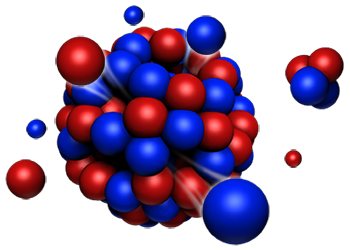Speaker
Description
The neutron Time-Of-Flight (n_TOF) facility at the European Laboratory for Particle Physics (CERN) is a pulsed white-spectrum neutron-spallation source coupled to two flight paths, each one leading to an experimental area: EAR1, 200 m from the target, and EAR2, 20 m above the target. The spallation source is based on a lead target, impacted by a high-intensity 20 GeV/c proton beam. The facility is designed to study neutron-nucleus interactions for neutron kinetic energies from a few meV to several GeV, with astrophysics, nuclear technology, and medical applications. The facility will undergo an important upgrade during 2019 and 2020, which will include the installation of a new and upgraded neutron-spallation target (Target #3, 3rd generation spallation device). The target currently installed (Target #2, 2nd generation) consists in a water-cooled pure-lead cylinder, coupled to a moderator filled with borated water. The new spallation target will be cooled by gaseous nitrogen to avoid corrosion phenomena and contamination of the cooling water with radioactive lead spallation products. The new design will also be optimized for the vertical flight path. After three years of design, four project reviews, many extensive R&D and prototyping activities, and tests under beam irradiation, the production of the new target has begun and it will continue through 2020. The new target installation, commissioning, and operation are planned for early 2021. This contribution will detail the spallation target design and the annexed equipment, with focus on the design choices intended to improve reliability, avoid issues encountered during the Target #2 experience, and guarantee optimal physics performance for both experimental areas.

